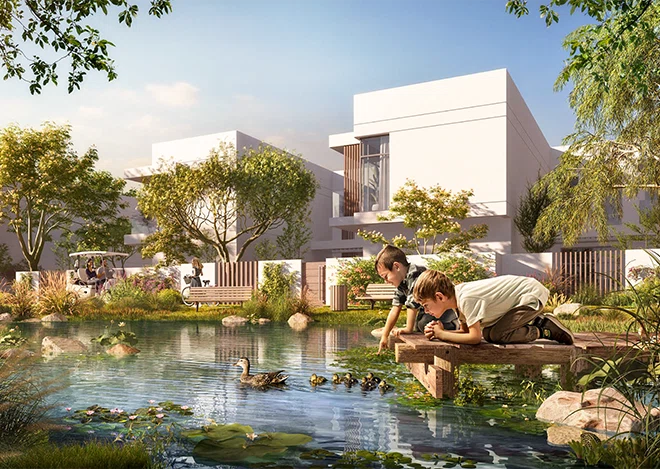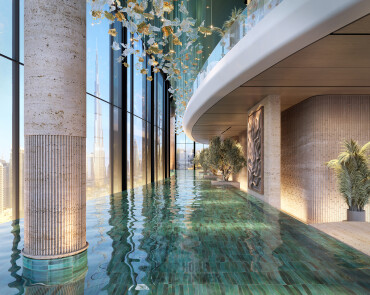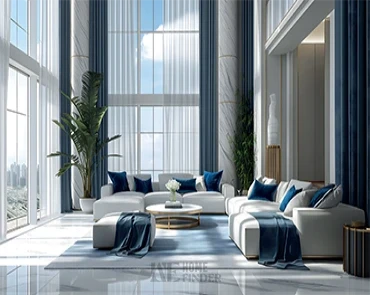
Posted On: Jan 18,2024
In recent years, a noticeable shift has taken place in the real estate sector, marked by a growing emphasis on sustainability.
Description
Cost-Efficiency and Long-Term Savings:
Sustainable real estate is gaining popularity due to its focus on energy efficiency and cost savings. Incorporating features like energy-efficient appliances, insulation, and smart technologies not only reduces environmental impact but also leads to substantial long-term savings for homeowners and businesses through lower utility bills.
Government Incentives and Regulations:
Governments worldwide are encouraging sustainable development through various incentives and regulations. Developers and homeowners are increasingly benefiting from tax credits, grants, and other incentives for adopting eco-friendly building practices. This regulatory support acts as a catalyst for the growing interest in sustainable real estate.
Increasing Consumer Demand:
Modern homebuyers are showing a strong preference for eco-friendly living spaces. There is a growing awareness of the impact of lifestyle choices on the environment, and as a result, consumers are seeking homes that incorporate sustainable features. Developers are responding to this demand by integrating green practices into their projects.
Innovative Technologies and Design:
Advancements in technology and design have given rise to innovative solutions in real estate. Sustainable building materials, energy-efficient systems, and eco-friendly design principles are becoming more accessible and attractive to both developers and buyers. These innovations contribute to the overall growth of sustainable real estate.
Corporate Responsibility and Reputation:
Real estate developers are recognizing the importance of corporate social responsibility (CSR). Aligning projects with sustainable practices not only meets regulatory requirements but also enhances the corporate image of developers. Being associated with environmentally responsible projects contributes positively to the reputation of real estate companies.
Resilience and Future-Proofing:
Sustainable buildings are designed with resilience in mind, considering the potential impacts of climate change and natural disasters. This approach not only ensures the longevity of structures but also provides a level of resilience against future uncertainties. The focus on future-proofing investments is becoming a key consideration for both developers and investors.
Conclusion:
The growing trend of sustainability in real estate is driven by a combination of economic, regulatory, and societal factors. As more stakeholders recognize the benefits of eco-friendly practices, the real estate industry is evolving to meet the demand for sustainable living. Investing in sustainable real estate is not just about being environmentally conscious; it's a strategic decision that aligns with long-term cost savings, regulatory support, and the changing preferences of today's homebuyers. This shift towards sustainability is shaping the future of real estate and influencing the way we approach development and investment in the built environment.
Sustainable real estate is gaining popularity due to its focus on energy efficiency and cost savings. Incorporating features like energy-efficient appliances, insulation, and smart technologies not only reduces environmental impact but also leads to substantial long-term savings for homeowners and businesses through lower utility bills.
Government Incentives and Regulations:
Governments worldwide are encouraging sustainable development through various incentives and regulations. Developers and homeowners are increasingly benefiting from tax credits, grants, and other incentives for adopting eco-friendly building practices. This regulatory support acts as a catalyst for the growing interest in sustainable real estate.
Increasing Consumer Demand:
Modern homebuyers are showing a strong preference for eco-friendly living spaces. There is a growing awareness of the impact of lifestyle choices on the environment, and as a result, consumers are seeking homes that incorporate sustainable features. Developers are responding to this demand by integrating green practices into their projects.
Innovative Technologies and Design:
Advancements in technology and design have given rise to innovative solutions in real estate. Sustainable building materials, energy-efficient systems, and eco-friendly design principles are becoming more accessible and attractive to both developers and buyers. These innovations contribute to the overall growth of sustainable real estate.
Corporate Responsibility and Reputation:
Real estate developers are recognizing the importance of corporate social responsibility (CSR). Aligning projects with sustainable practices not only meets regulatory requirements but also enhances the corporate image of developers. Being associated with environmentally responsible projects contributes positively to the reputation of real estate companies.
Resilience and Future-Proofing:
Sustainable buildings are designed with resilience in mind, considering the potential impacts of climate change and natural disasters. This approach not only ensures the longevity of structures but also provides a level of resilience against future uncertainties. The focus on future-proofing investments is becoming a key consideration for both developers and investors.
Conclusion:
The growing trend of sustainability in real estate is driven by a combination of economic, regulatory, and societal factors. As more stakeholders recognize the benefits of eco-friendly practices, the real estate industry is evolving to meet the demand for sustainable living. Investing in sustainable real estate is not just about being environmentally conscious; it's a strategic decision that aligns with long-term cost savings, regulatory support, and the changing preferences of today's homebuyers. This shift towards sustainability is shaping the future of real estate and influencing the way we approach development and investment in the built environment.
.jpeg)
_745_746.jpg)



_740_741.jpg)
